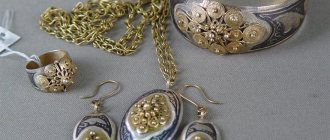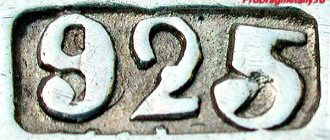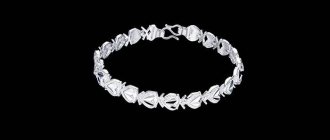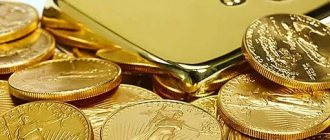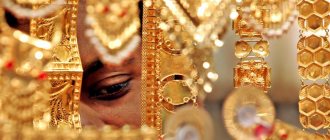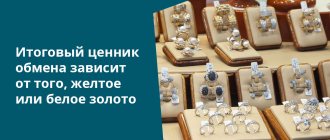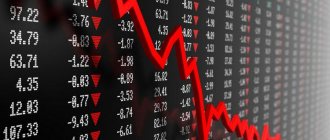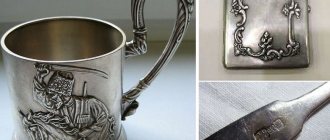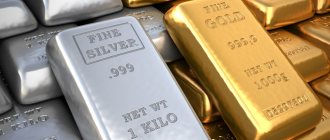Forex traders are primarily concerned with analyzing and trading assets valued in fiat currency. These are such as gold, bitcoins, oil and others in relation to the dollar or euro and other currencies. However, there are times in an asset's cycle when learning the price relative to other assets can be very significant. In fact, there are traders who rarely check the fiat price of the assets they trade. This may initially be confusing for those who always use their national currency as a benchmark for asset value, but for gold traders and cryptocurrency holders this is not the case at all.
Why compare one asset to another?
For most traders, it all comes down to accumulating fiat money. The US dollar, for example, is used as a benchmark for the performance of their portfolio, and they will move back and forth between dollars and other assets. The goal is to enter and exit trades at the right times to continually increase your account's dollar balance. And Forex brokers rarely offer pairs that are not related to the dollar for trading.
However, some traders are not interested in accumulating fiat currency. A certain portion of gold and cryptocurrency traders are primarily concerned with accumulating more gold and bitcoins, respectively. This could be because they have a negative view of fiat currencies in general or expect these hard assets to significantly outperform government bond yields over the long term. By trading in the precious metals markets and the broader crypto market for Bitcoin traders, they are trying to increase their holdings without having to convert them into fiat money. The reason this is important to all of us is that there may be a lot of useful information in those asset pairs that we rarely look at.
Investing in precious metals is a way to take care of your future today
In order to be prepared for any development of events, you need to have a “safety cushion” that can soften the financial blow to your condition.
Physical precious metals are just such a “safety cushion” that can be stored in a safe place for many years to provide its owner with financial security at any time when it may be needed. Investing in physical precious metals with Global Gold means quality, reliability and confidentiality. Your bars and coins are stored in a specialized vault in one of the world's prestigious financial centers: Switzerland, Hong Kong or Singapore.
Precious metals held in storage are insured and are not subject to VAT until they are transported to another country with different tax laws. Ownership of physical precious metals does not need to be reported to anyone and remains confidential.
To learn more about the options for opening a Global Gold account to purchase and store physical precious metals, please contact us: [email protected]
A Brief History of the Gold to Silver Ratio
In this age of freely floating currencies, we expect asset values to fluctuate relative to each other, but this was not always the case. Precious metals such as gold have historically been used as a stable peg to both national currencies and each other. During the Roman Empire, the gold to silver ratio was fixed at 12:1 (12 ounces of silver per ounce of gold). At the end of the 18th century, the US government established the ratio of 15 to 1, and by the end of the 19th century it was fixed almost everywhere at the same ratio of 15 to 1. The 20th century was a century of world wars, financial crises and fragmented markets. During this period, the gold to silver ratio rose from just under 18 in 1919 to almost 98 in 1940. In modern times, it has risen from lows of just over 30 in 2011 to record highs of 120 during last year's COVID-19 disaster. Now the ratio of gold to silver fluctuates in the range of 70-80.
Troy ounce in grams - what is it, how much is it, what metals are measured, types of ounces
The ounce is used by different countries to estimate body weight. And the concept of troy is primarily used when indicating the weight of precious metals. On the stock exchange, this measure denotes the mass of only precious metals: gold, silver, palladium and platinum.
Sometimes it is used to estimate the weight of medications and in the production of cosmetics (to estimate the proportions of the components used).
In 1 kilogram - 32.1507466 ozt.
Troy ounce is a unit of measurement for the weight of gold.
An ounce of gold: cost, what it means and where it is used
Why is an ounce of gold currently used to estimate mass (is it applicable to other precious metals)? Indirectly, this simplifies calculations for traders. One basic lot on the exchange weighs 100 ozt, which is now approximately 150 - 160 thousand dollars. One minimum asset to purchase is approximately $1.07 – $1.08. And with a leverage of 1:100, the purchase price of one lot will be about $1,500.
Parallel between gold/silver and bitcoin/altcoin
There is an interesting parallel between the gold/silver ratio and trading in the cryptocurrency markets. In cryptography, Bitcoin acts like gold, and other “altcoins” play the role of silver to Bitcoin’s gold. Like silver, altcoin markets are smaller and more volatile. During risk-free stages, liquidity flows back into Bitcoin, just like it does into gold. During risk phases, it flows into altcoins, as is the case with silver. This explains the volatility in the silver and altcoin markets. These are smaller vessels that are filled and drained by large amounts of liquidity at different stages of the market cycle as speculators move from a larger, safer bet to a smaller, riskier play.
Why is it important to distinguish between troy and regular ounces?
The names can be confused, but these measures have different meanings. A regular ounce weighs 28.35 grams. Using a simple mathematical formula, you can determine that the weight of a troy is 9.7% more than usual. The difference may seem insignificant. But if we are talking about trading, where the transaction amount, taking into account leverage, can be 1000 XAU, then the difference would be 1 kg of gold. And this is a huge difference in the estimated value of assets! On exchanges, a trader’s income can be generated from a purchase/sale difference of only 0.5%.
There are unscrupulous sellers who sell scrap precious metals, indicating its weight in ordinary ounces. If the buyer does not clarify this nuance, he may overpay the same 9.7%.
Gold bars
How to use price dynamics
From the recent lows of 2011 to the highs of March last year, gold rose nearly 300% relative to silver. In 2019 alone, it increased by 50% from January to March, and then by 45% from March to September. For a precious metals trader, this is an opportunity to double your gold holdings in less than a year without going into fiat. For the rest of us, the ratio not only hints at which of the two options to focus on at what time, but it also tells us how gold holders feel about the economy as a whole in a different resolution than the gold-dollar pair. In this particular case, this opinion is due to the state of the post-COVID recovery and the injection of a large mass of money into the economy (reflation).
Looking back at price action in 2021, we see a massive shift from silver to gold as the global economy grinds to a halt, and then we see a tentative return to risk-on behavior in May and June, before a full move forward in September. What's intriguing here is the support level that seems to be forming at 70. We were there in August, September, December and again in early January. One might assume that if reflation were to get into full swing and the economy began to return to normal, then we would have to see a break below this level in the gold/silver ratio.
So, silver is a precious metal like gold, with a limited supply and other store-of-value characteristics. But it is also a metal that is invaluable for industry (solar panels, batteries, semiconductors and more). In our current economic climate, where we are collectively trying to emerge from the current crisis amid skyrocketing government debt, low rates, and unprecedented monetary expansion (scenarios in which gold tends to thrive), can silver hold its own in 2021? A further decrease in the ratio will mean an increase in the importance of silver.
Content in the earth's crust
On average, the ratio of gold and silver in the earth's crust ranges from 1 to 15 milligrams per ton of land. Since the density of the earth's crust is 2.7 tons per cubic meter, it contains 25 billion tons of gold and 375 billion tons of silver. However, such concentrations are too low for economic extraction.
Precious metal mining can only be profitable if the gold and silver are in a highly enriched form, which is extremely rare. The distribution of precious metals in the earth's crust, especially their massive accumulation in sediments, has long been a big mystery to scientists. Only gradually did it become clear that over billions of years the Earth had repeatedly undergone major geological changes due to ice ages, volcanism and tectonic movements of continental plates. Extreme pressure, high temperatures and certain chemical and thermal conditions have affected the concentration of precious metals.
Most of the accumulations of gold and silver in the earth's crust are of hydrothermal origin. Particularly important for the formation of ore deposits was the combination of divergent and convergent movements within the boundaries of tectonic plates and corresponding volcanic activity, in which magma, and with it the elements contained in it, ensured the rise of magmatic melts. As a result, elements that were previously deep in the earth's mantle were transported to the surface, crystallized and accumulated. Deposits of gold and silver that accumulate in the earth's crust in this way are called primary . Because silver is less likely to form compounds with other metals than gold, it can be more easily detected in enriched form closer to the surface. In addition, silver dissolves more easily and has a lower density, which facilitates geothermal transport from deeper layers and storage in higher layers of the earth's crust.
Elemental precious metals are very stable but can dissolve easily under certain conditions, especially silver. Gold, on the other hand, is transported by water in an undissolved form. Due to lower flow rates, gold-enriched sand deposits can form at the inner edges of river bends. Such deposits are called secondary .
Listed below are some of the most important gold and silver deposits, differentiated according to their formation process:
Mesothermic deposits
Associated with mountain building processes and were created by tectonic shifts of plates in the oceanic crust over three billion years. Such deposits can be found in Africa, Brazil, Northern Canada, Siberia and Western Australia.
Epithermal deposits
They originated from magmatic hydrothermal fluids that transported the ores they contained into near-surface volcanic passages. A deposit of this type is located in Nevada, USA (Comstock Lode). This is one of the largest deposits of silver ever found in nature. Also silver deposits in Mexico; lead, silver and zinc in Canada and the USA; tin, silver and bismuth in Bolivia. Such deposits can form in fairly short periods of time, sometimes in as little as 50 thousand years, for example on the Lihir Islands in Papua New Guinea.
Fossil deposits
These secondary deposits were created about two billion years ago when sediment and gravel settled into the river bed. As a result of their weathering, relatively weather-resistant precious metals accumulated. The proportion of silver in fossil deposits is low because it dissolves easily during transportation.
Young sediments
If gold enters rivers, gold particles can be deposited in places where the water does not have a strong enough flow rate. Gold gradually separates from other minerals. Gold sand and fine grains are almost always found near large primary gold deposits. In rare cases, large fragments of gold, called nuggets, may form.
What other ounces are there?
The term itself takes its roots in Ancient Rome. There it meant 1/12 of something: weight, length, volume, size. Due to the fact that Rome was one of the key points of international trade, the “ounce” as a measure of weight began to be used everywhere. Its approximate weight has always been about 30 grams (the exception is the Dutch metric ounce).
Currently, only the usual (international) one is used by those countries where the English counting system is adopted, as well as the troy one.
In the system of measures there is still a “fluid” ounce. There are 2 variations of it: American (29.51 ml) and English (28.41 ml), which, however, are now practically not used anywhere.
Variations in the cost of an ounce of gold, taking into account markups
The average consumer cannot buy 1 ounce of silver or gold. Trade in precious metals among individuals is generally prohibited by law in many countries. This does not apply to jewelry made from precious metals. When purchasing, the price of gold will be significantly higher than the current exchange rate. After all, they add to the cost:
- jeweler's work;
- trade markup of a jewelry store.
The final price is approximately 40% higher than the exchange price. The highest markup is in collectible coins, up to 1000%.
INTERESTING! The florin of Edward III is now considered the most expensive coin. Three such specimens are known to exist. Its estimated value for auctions is $6.8 million. But until today, none of the auction houses had put it up for sale.
The most expensive florin coin of Edward III
Historical chronicles of the origin of the troy ounce and its international significance
All historical sources consider the city of Troyes, the province of Champagne in France, to be the place where this measure of weight appeared, which in the 14th century was a major trading city approved for use by the Count of Troyes - Thibault the Great.
Then this simplified settlements between traders from different countries.
It was used not only to estimate the mass of precious metals, but also products (spices, grains). The concept of a “fluid” ounce was also introduced, corresponding to a volume of 31.103 ml (now practically not used).
Gold jewelry, bracelets
Then the measure began to be actively used by bankers, jewelers and far beyond the borders of France. It was not approved by law; it became the gold standard for measurement much later on the initiative of traders and buyers.
INTERESTING! Troyes is located in the historical region of Champagne, which became famous throughout the world for its winemaking. And “champagne” was invented here. According to legend, it was obtained quite by accident: due to the local climate, the grapes ripened quickly. Therefore, it had a lot of sugar and low acidity. This led to the fact that when aging wines they turned out to be sparkling (the fermentation process started).
